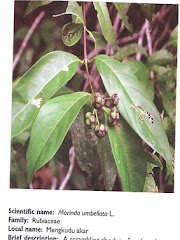Estimations of the value of Parks and Protected areas
Pg 874
Global biodiversity assessment
An increasing number of studies in recent years have applied various valuation methods to value parks and other protected areas. Here we select a sample of these studies to illustrate the use of different valuation method in valuing different forest products, services and functions of tropical forest habitat and to provide a sense of their range of values that are obtained compared with traditional forest values.
Tobias and mendelson (1990) as cited in Global assessment biodiversity have estimated the value of ecotourisme in the Monteverde Cloud Reserve in Costa Rica using the travel cost method.Munasinghe (1993) presents the preliminary results from a World bank study that assesses the costs
They obtained a net present value of ecitourisme benefits (consumer surplus) for both domestic and foreign visitors totaling US$8 million for the 10,000 ha reserve or $1250 per hectare. This compares very favourably with a $ 30-$100 per hectare price of agricultural lan in surrounding areas. Therefore conservation of forest land agriculture in the area would result in a social loss $1000 per hectare, while expansion of the reserve would generate a substantial social gain. Yet, if the ecotourism value of the forest is not internalized to local landowners, expansion of the parks is uneconomic in private terms.
The average sonsumer surplus for the sample was estimated at US$35, which extrapolated over the entire visitor population and using a real rate of interest of 4%, yields a net present value for recreational use of forest of $1250 per hectare. The World Bank estimates that activities related to tourism world-wide approaches $@ trillion annually
Ecotourisme is emerging as one of the fastest growing components of this industry with as many as 235 million individuals particitaping in 1988, resulting in economi activity estimated at $233 billion. More than half of this ecotourism was related to animals (Filion et al., 1994)
In response to the severe threat of forest degradation and biodiversity loss, Madagascar is considering creating additional parks and national reserves. To offset the opportunity costs imposed on local people by park creation and to increase the likelihood of forest protection, nature tourism and buffer zone activities have been included in some park projects.
Two of the more important and more difficult to measure economic impacts of national parks creations are the costs incurred by local villagers and the benefit received by foreign tourists.
The opportunity cost approach, travel cost method and contigent valuation approach were used to assess these values in the new Mantadia National Parks. To estimate the proportion of travel expenditure which should be attached to the site in question, a series of questions was prepared regarding costs, itinerary, willingness to pay for the site, as well as economic and sociodemographic characteristics. The preliminary resilts are summarized this table
Item valued Valuation technique Aggregated net present value (20 years and 10% DR
1. Direct use benefit of forest by local villagers_africulture, fuelwood, crayfish, crab,tenrec, frog Opportunity cost (production function approach) US$566,070
2.Net benefit of forest for local villagers_including use and non use costs and benefits Contingent valuation US$673,078
3. Direct use benefits of tourists_tourism benefit only Travel cost US$796 870
4. Net benefit of park creation for tourists_ may include tourism and other perceived benefits and costs of parks creation, e.g. lemur conservation Contigent valuation US$2,160,000
Sources based on Munasinghe (1993) and Kramer (1993)
Dixon and Sherman (1990) have estimated the value of biodiversity of the Khao Yai Park in Thailand at $4.8 million per year and its ecotourisme value in the range of $0.4-$1.0 million per year. These values compare favourably with tha almost $7million a year loss of income to villagers from traditional from users forgone due to the parks.
On the benefit side, the watershed and carbon sequestration value of the forest were not estimated, nor were the non use values. On the opportunity cos
Table: Ecosystem functions and their uses
Regulation functions Production functions Carrier functions Information functions
Providing support for economics activity and human welfare through: Providing basic resources, such as: Providing space and a suitable substrate inter alia for: Providing aesthetics, cultural and scientific benefits through:
a. protection against harmful cosmic influences a. oxygen a. habitation a. aesthetics information
b. climate regulation b. food,drinking water and nutrition b.agriculture, forestry, fishery, aquaculture b. spiritual and religious information
c.watershed protection and catchment c. water for industry. Households etcd. Engineering projects such as dams and roads c. industry c. cultural and artistic inspiration
d. erosion prevention and soil protection d. clothing and fabrics d. recreation d.education and scientifics information
e. storage and recycling of industrial and human waste e.building, construv\ction and manufacturing materials e. nature conservation e. potential information
f. storage and recyling of organic matter and mineral nutrients f. energy and fuel
g.maintenance of biological and generics diversity g. minerals
h. biologival control h. medicinal resources
i. providing a migratoty, nursery and feeding habitat i.biochemical resources
j. genetic resources
k. ornamental resources
Sources : barbier et al., (1994); based on de Groot (1992); Ehrlich (1992); Folke (1991); Odum (1975) as cited in Global Assessment Biodiversity.
Pg 879
Estimates of the use vakue of forests
Tropical moist forests harbour between two-thirds and three-quarters of the world’s species. However, we emphasize that the remarks made about tropical forests apply. The particular problem posed by the conservation of tropical forests is that while human-made plantations maintain rainfall regimes and cycle carbon at rates similar to those of indigenous forest is converted to plantations. Conservation of genetics resources should be evaluated along with other goods and serviced by forests. And should form an integral part of land use and management. This is not to say that all forests should be preserved. The aim of conservation should be to optimize the provision of ecological and other services and this does not necessarily imply the preservation of the existing resources in all its facets
Indirect use value of ecological functions
1. watershed protection of fisheries
2. control of flooding by forests
3. soil fertility maintenance by forests
4. watershed protection of marine tourism
5. watershed protection of fisheries
6. water yield augmentation of managed forest
7. carbon storage by forest
8. support by mangroves of agriculture, fishing and cottage industries
9. nitrogen reduction by restored wetland
Tropical forest provide a diverse range of functions and services, including sustainable timber production, non-timber forest products, soil conservation and watershed protection, habitat d\for biodiversity, homeland for indigenous and animal/wildlife such elephant , tiger,bear,seladang, fox, birds, bees etc
The fiunction also including recreational activities and services, amelioration of n\microclimate, and carbon fixation and sequestration and the for army gerilla tactical strategy /counter insurgency warfare such as the event warfare that occurred in Vietnam. When Us attacked IndoChina…history event.
All this functions and services have positive economic value that contributes to human well being, they are rarely taken into account when land use and forest management decisions are made.
أَلَمْ تَرَ أَنَّ اللَّهَ يُسَبِّحُ لَهُ مَنْ فِي السَّمَاوَاتِ وَالأرْضِ وَالطَّيْرُ صَافَّاتٍ كُلٌّ قَدْ عَلِمَ صَلاتَهُ وَتَسْبِيحَهُ وَاللَّهُ عَلِيمٌ بِمَا يَفْعَلُونَ Tidakkah kamu tahu bahwasanya Allah: kepada-Nya bertasbih apa yang di langit dan di bumi dan (juga) burung dengan mengembangkan sayapnya. Masing-masing telah mengetahui (cara) solat dan tasbihnya, dan Allah Amat Mengetahui apa yang mereka kerjakan. an-Nur:41
Tazkirah
Sami Yusuf_try not to cry
mu'allim Muhammad Rasulullah Sallallahu alaihi waSalam
ummi_mak_mother_ibu_Sami Yusuf
zikir Tok Guru Nik Abdul Aziz Nik Mat Mu'allimul Mursyidi
syeikh masyari afasi
ruang rindu
song
Arisu Rozah
Usia 40

Mudah mudahan diluaskan rezeki anugerah Allah
usia 40 tahun

UPM

Kuatan Pahe Darul Makmur
pemakaian serban semsa menunaikan solat_InsyaAllah ada sawaaban anugerah Allah
Rempuh halangan

Abah_menyokong kuat oengajian Ijazah UPM

usia 39 tahun

usia 23 tahun_UPM
An_Namiru

Ijazah Pengurusan Hutan UPM

General Lumber_Nik Mahmud Nik Hasan

Chengal

Tauliah

Semasa tugas dgn general lumber

PALAPES UPM

UPM

Rumah yang lawa

Muhammad_Abdullah CD
semasa bermukim di Kuatan Pahe Darul Makmur
Ijazah

air terjun

Borneo land

GREEN PEACE
GREEN PEACE
Kelang

Ahlul Bayti_ Sayid Alawi Al Maliki

Asadu_ Tenang serta Berani

atTiflatul Falasthiniin

Sayid Muhammad Ahlul Bayt keturunan Rasulullah

AnNamiru_SAFARI_Kembara

AnNamiru_resting

Hamas

sabaha anNamiru fil nahri

Namir sedang membersih

Tok Guru Mualimul_Mursyid

An_Namiru
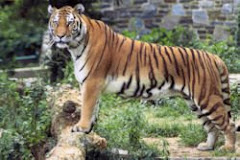.jpg)
Namir_istirehat
.jpg)
SaaRa AnNamiru fil_Midan
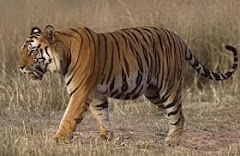.jpg)
Renungan Sang Harimau_Sabaha AnNamiru
.jpg)
Syaraba AnNamiru Ma_A
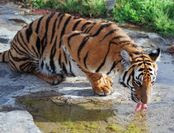.jpg)
AnNamiru_Riadhah
.jpg)
AnNamiru_Riadhah
.jpg)
AnNimru ma_A waladuha
Namir fil_Ghabi (sebut Robi...
Namir

AdDubbu_Beruang di hutan

Amu Syahidan Wa La Tuba lil_A'duwwi

AsSyahid

Namir

Tangkas
najwa dan irah

sungai

najwa

najwa

Kaabatul musyarrafah

unta

Jabal Rahmah

masjid nabawi

masjid quba

dr.eg

najwa dan hadhirah

along[macho]
![along[macho]](https://blogger.googleusercontent.com/img/b/R29vZ2xl/AVvXsEjuMi7D33CmR0_KXrCW2XigfLcUuQurcvtqOS139ncCwEzCyB-jUopk7QK7anADIenJEm2S0N6gAY1ubnACYXewgiAsI3rBjnLTawM39alLL-rEopOoVqn0w5WpLhPJH3hrXNtchEhgtyaI/s240/P7150023.JPG)
harissa dan hadhirah

adik beradik
Tongkat Ali

Tongkat Ali
herba kacip Fatimah
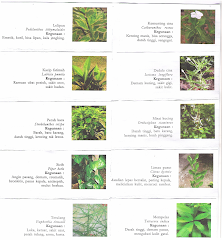
herba Kacip Fatimah
hempedu beruang
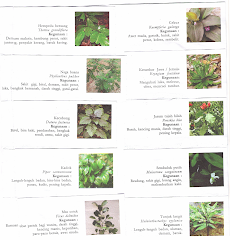
hempedu beruang
hempedu bumi

hempedu bumi
herba misai kucing

herba misai kucing
herba tongkat Ali
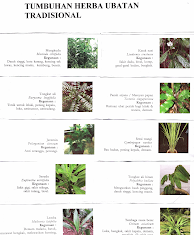.png)
Tongkat Ali
Ulama'

Ulama'
kapal terbang milik kerajaan negara ini yang dipakai pemimpin negara

kapal terbang
Adakah Insan ini Syahid

Syahid
Tok Ayah Haji Ismail

Saifuddin bersama Zakaria

Dinner....
Sukacita Kedatangan Tetamu
Pengikut
Kalimah Yang Baik

Ubi Jaga
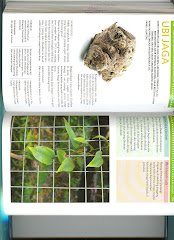
Ubi Jaga
Arkib Blog
Burung Lang Rajawali

Chinese Sparrowhawk
Kelicap Mayang Kelapa
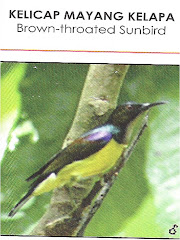
Brown-Throated Sunbird
Kopiah

Pokok Damar Minyak

Kacip Fatimah
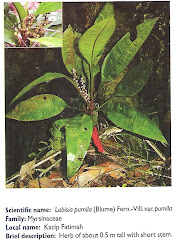
Mengkudu Akar
